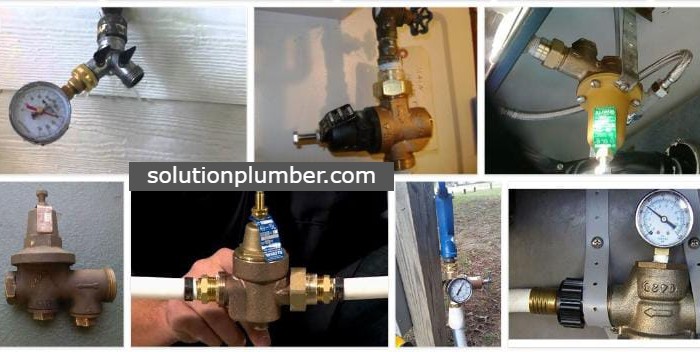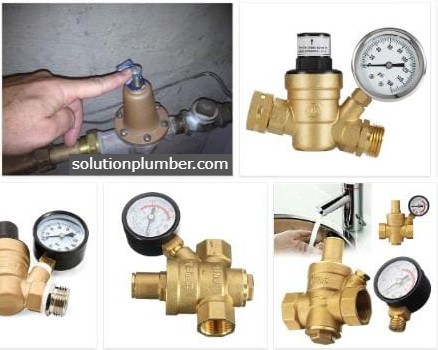The purpose of a water pressure regulator is to regulate the water pressure in individual homes. It functions as a synchronizer between the supplier's water's extremely high pressure and the customer's low pressure requirements. Regulators can be added to a home's water supply to protect faucets, showers, and other household appliances. However, the device itself can have issues at times. Although a new regulator is frequently required for repair, understanding the types of issues that can arise with the machine can assist users to reduce the cost of the machine's final failure.

WATER PRESSURE COMMON PROBLEMS
- Pressure Set Too Low
One of the most common problems with the regulator is that the water pressure is set too low to begin with, or that the water pressure regulator is unable to meet the household's expectations at that pressure level. Make sure that the low pressure can meet all of the family's needs when installing your regulator, such as running the shower and the dishwasher at the same time. If the water pressure is not maintained, the hot water tank may not be able to supply enough water, or the heating system may fail when water-using devices are running.
- Blockages
Another major issue is the possibility of the device becoming clogged or jammed. This can be the cause if you detect a rapid drop in pressure. Debris enters from the outside, maybe through a leak in the garden pipes or a supply-side issue, and travels through the pipes to the water pressure regulator. Because the pipes on the regulator must be small in order for the device to work, even a small quantity of silt might obstruct the flow of water enough to create issues including short cycling, water pressure loss, or even the regulator's entire failure.
- Pump Loss
The loss of the pump, which assists the machine in water control, is another severe issue for the regulator. When this pump fails, whether due to silt buildup or equipment failure, pressure rises. If the pump cannot be heard when the regulator is turned on, the pump should be replaced. If the pump has failed, tapping on the side of the pressure control switch may help with low pressure regulation, but it will not help with high pressure.
- Short Cycling
The pump may begin to turn on and off at random intervals, resulting in either too low or too high pressure in the water system. This is most commonly caused by a loss of air in the water tank, and can be found in older, corroded tanks. Another cause could be a problem with your regulator's pressure control switch, or a short circuit or damaged wire. Blockages like the ones described above can also cause problems with the pressure switch's control, as silt stops the switch from moving as it should.
If your water regulator isn't working properly, there are a few things that could be causing the problem. Follow the procedures below to diagnose the problem and confirm that it is your water regulator.
How To Diagnose The Water Pressure Problem

- Look for the Signs of Failure
Before you touch the water regulator, do your best to diagnose the problem. The regulator isn't responsible for all plumbing problems. To begin, turn on the faucet that is farthest away from the water regulator.
If the water pressure appears to be too high or too low, it's possible that your regulator is malfunctioning. The following are some other signs of a defective water regulator:
- High or low water pressure (>80 PSI or <40 PSI)
- High or low water flow from the faucet
- Vibrating or banging pipes
- Leaky valves on the sink or toilet
- Leaky faucets even though the water is off
Before you replace the faucet or toilet, make sure you check all of the other components. Most plumbing systems have a higher rate of seal failure than regulator failure.
- Check for Short Cycling
Short cycling is a term used when a pump is turning on and off too often. When this happens, it means the pump's switch has become blocked or shorted. Because of the blockage, the pump cycles too quickly, resulting in excessively short pump cycles.
Short cycling affects water pumps when the pump loses air, causing the cycle to become sparse. This is more common in older pumps or pumps that have corroded over time. Shorts can also form as dirt accumulates over time.
Before playing with the water regulator, you should perform this troubleshooting step as part of your plumbing system inspection. If you're having problems with your pump, it's advisable to call in a plumber to assess the situation, as water pumps are very technical and dangerous if not handled properly.
- Check For Water Pump Failure
It's possible that the pump is producing problems even if it's not short cycling. The issues that cause a pump to short cycle can quickly escalate to the point where the pump is rendered useless. To put it another way, a badly maintained or outdated pump might wear out to the point where it completely stops working instead of cycling through brief cycles.
The major causes of this problem are a loss of air or a build-up of silt in the pump. Either of these issues can prevent the pump from turning back on.
Alternatively, the issues may cause more water to flow through the pump than it should, causing the pump to break down over time. Because the water pump is so important for getting pressure through the pipes and water through the house, it's an important part of the system to inspect.
If a pump has fully failed, it's necessary to enlist the help of a professional to analyze the situation. A professional in your region will be able to tell if the pump can be fixed by changing a part or if it needs to be replaced entirely.
- Seal Any Leaks or Dripping
A cracked or worn-out seal is usually the source of a plumbing problem. Mechanical failures do occur, however seals that have worn out over time are more likely to be the reason. Before you tear up the water regulator, make sure all of your faucets, toilets, and sinks are in good working order.
Check your sinks and toilets for any pools of water around or around the various seals. If these places are properly sealed, there should be no moisture accumulating in or beneath them. When checking from the exterior, there should be no water on the pipes or the seal.
Replacing or patching a seal can help you solve your problem. Because water pressure is the most important factor in your plumbing system, a leak that results in a drop in pressure might be the difference between a weak and a normal faucet.
- Replace the Gaskets
After you've tried all of the other possibilities, it's safe to conclude that the water regulator is the source of the problem. That does not, however, imply that the water regulator is the root of the problem. Instead, a leaking or worn-out gasket could be coupled to the regulator.
The rubber rings and other shaped rubber pieces in the pipes that form an airtight seal on the regulator are known as gaskets. The water pressure that these gaskets are subjected to on a regular basis might cause them to wear out over time.
You can avoid the problem of replacing the entire water regulator by replacing these gaskets, which is more time-consuming and expensive. To replace the gaskets, open up the regulator and inspect the rubber gaskets for any rips, tears, or notches.
The issue should be resolved by removing the damaged gaskets and replacing them with new ones. Check that the new gaskets are the same size as the old ones. You may not be able to get the correct seal on your regulator if you do not do so.
- Clean Out the Water Regulator
Water regulators, like any other portion of your plumbing system, can clog. We've already described how the system might become clogged, but your water regulator can also fail. Mineral buildup is usually the cause of a clogged regulator.
Minerals are included in the majority of the water that passes through your pipes. These minerals might deposit in regions where the water doesn't flow well. Mineral deposits build up over time and might obstruct the flow of water via the regulator.
Remove the water regulator and place it in a bath that can remove the mineral deposits to get rid of them. Because calcium lime makes up the majority of the minerals, something that can remove calcium is the most effective.
Soak the regulator for a few hours in this bath before inspecting it. If no deposits are visible, reattach the regulator and you should be good to go.
- Replace the Whole Water Regulator
Since the water regulator is a mechanical component, it may fail for reasons other than mineral deposits or gasket failure. The mechanical pieces that regulate the water pressure in your plumbing system might fail over time and wear.
While a total replacement is a last resort, it may be the only option for resolving your water pressure issues. If you need to replace your water regulator, make sure you get one that is compatible with your plumbing system.
It's important to match the pipe size, water output, and pressure requirements of your current regulator to the new one in order to get your plumbing back up and running. For the next step, we urge that you seek expert assistance.
It's a technical procedure that necessitates a strong understanding of plumbing to avoid causing damage to your pipes or other water fixtures.